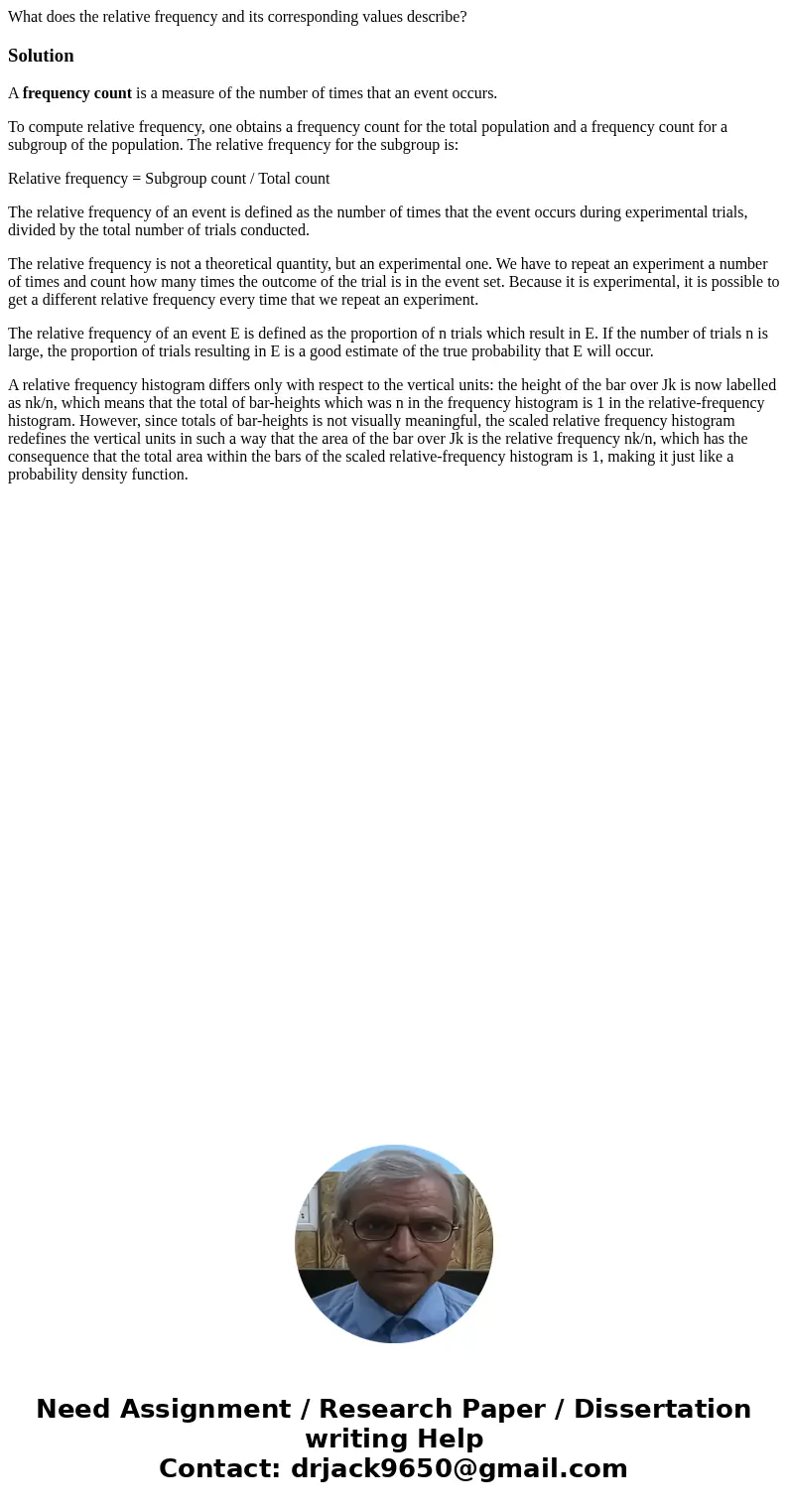What does the relative frequency and its corresponding value
What does the relative frequency and its corresponding values describe?
Solution
A frequency count is a measure of the number of times that an event occurs.
To compute relative frequency, one obtains a frequency count for the total population and a frequency count for a subgroup of the population. The relative frequency for the subgroup is:
Relative frequency = Subgroup count / Total count
The relative frequency of an event is defined as the number of times that the event occurs during experimental trials, divided by the total number of trials conducted.
The relative frequency is not a theoretical quantity, but an experimental one. We have to repeat an experiment a number of times and count how many times the outcome of the trial is in the event set. Because it is experimental, it is possible to get a different relative frequency every time that we repeat an experiment.
The relative frequency of an event E is defined as the proportion of n trials which result in E. If the number of trials n is large, the proportion of trials resulting in E is a good estimate of the true probability that E will occur.
A relative frequency histogram differs only with respect to the vertical units: the height of the bar over Jk is now labelled as nk/n, which means that the total of bar-heights which was n in the frequency histogram is 1 in the relative-frequency histogram. However, since totals of bar-heights is not visually meaningful, the scaled relative frequency histogram redefines the vertical units in such a way that the area of the bar over Jk is the relative frequency nk/n, which has the consequence that the total area within the bars of the scaled relative-frequency histogram is 1, making it just like a probability density function.

 Homework Sourse
Homework Sourse